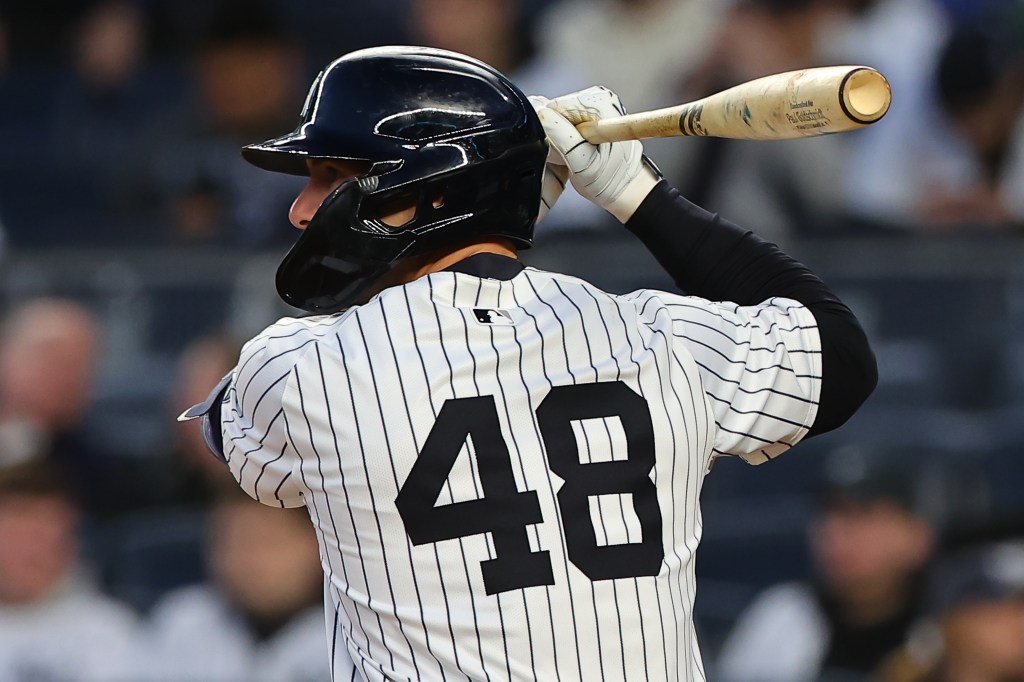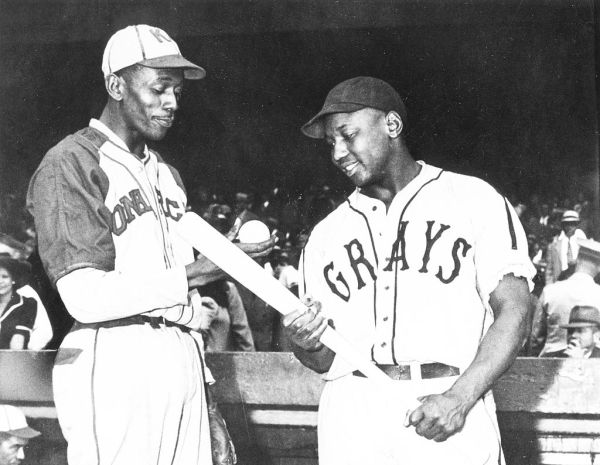Alan Nathan hadn’t been watching the 2025 season-opening series between the New York Yankees and the Milwaukee Brewers when he got a text from a colleague who works for the Atlanta Braves: “What’s going on with these bats?” The Yankees had unleashed nine home runs in a 20-9 win against Milwaukee, and some of their hitters lifted new lumber—the torpedo bat.
Nathan is a professor emeritus of physics at the University of Illinois Champaign-Urbana and one of the few academic physicists with a longstanding association with Major League Baseball (MLB). He has done plenty of consulting for the league and its teams. He’d heard of torpedo bats, but because they weren’t widely used he hadn’t really studied them. Once he did, “My first reaction was, ‘Why the hell didn’t I think of that?!’”
It was another physicist, Aaron Leanhardt, a former professor and now a field coordinator with the Miami Marlins, who sparked the reimagination of the baseball bat when he was with the Yankees. It was a group effort, he told The Athletic, “from conversations with coaches, players, MLB and bat makers.”
Putting the wood where it does the most good.
The torpedo bats are safely within MLB rules, which dictate only that bats must be “solid wood, round, shorter than 42 inches, and no wider than 2.61 inches,” according to Baseball Prospectus.
What’s different is that the torpedo bat takes wood “from the very tip of the bat” and puts it “where it does the most good,” says Nathan. That’s somewhere between 6 to 7 inches away from the bat’s tip, toward the hitter’s hands. A traditional bat flares from its skinnier handle, where the batter grips the bat, to the barrel—the bat’s thickest section.
To anyone who doesn’t follow baseball closely, the torpedo bat doesn’t look drastically different from the typical bat of old. Unlike a traditional bat, the torpedo bat’s barrel gradually widens to those 6 or 7 inches from the bat’s tip, depending on the design specifications, which are highly customized to the batter. (It’s a labor-intensive, highly individualized build for each batter, says Nathan). The barrel taper then reverses, narrowing toward the bat tip.

To most of us, it looks less like a torpedo than does a traditional bat. It’s graceful–more reminiscent of a bowling pin (Leanhardt’s original manufacturing code for the bat began with BP, for bowling pin) or a juggling pin, if sculpted by Giacometti or designed by Raymond Loewy.
But the “torpedo” moniker has stuck, particularly after the Yankees’ explosive opener. The Yankees scored 36 runs in the series, and of the 15 home runs they hit off a middling set of pitchers for the Brewers, nine were with torpedo bats. In all, five Yankees sluggers use the new bats, including Jazz Chisholm Jr. and Anthony Volpe (but not Aaron Judge). A better marketing launch you could not script.
Social media was ablaze, the New York Post devoted practically half of its April 1 edition to the stick, and the bats’ manufacturers—Marucci Sports, Victus Sports, Chandler Bats, Louisville Slugger—high-fived each other. “This is Torpedomania,” Kurt Ainsworth, CEO and co-founder of Marucci Sports, told The Athletic.
Okay, but how do they work? “Start with the observation that the end of the bat is not all that useful,” said Nathan in an interview with The Dispatch. It protects the outside of home plate, but batters can’t make very good contact at the end of the bat. Most prefer to hit further down the barrel.
Moving mass to where batters prefer to hit the ball should create a larger hitting surface that could be an advantage—a foul tip that counts as strike three becomes a regular foul ball, extending the at-bat.
And that in fact is what Nathan has found. A rep at one of the bat manufacturers has given him the bat profile data for two MLB hitters for both their new torpedo bats and their previous conventional bats, which Nathan has run on his computer simulator. Using torpedo bats, both batters achieved higher exit velocity (the speed of the ball travelling off the bat—the ultimate metric of performance, says Nathan) in the region where they prefer to hit the ball.
That preferred area is the bat’s sweet spot, or as Nathan believes is more accurate, its sweet zone. It’s the area where the exit velocity is highest on impact. Some define the sweet zone as the area that produces the least vibration on impact, but Nathan says the two regions largely overlap. Although his research is still in the preliminary stage and he hesitates to speak definitively about the torpedo’s sweet zone, “It definitely seems to be the case that it’s bigger.”
To describe the torpedo bat’s other advantage, Nathan pulls a traditional bat from under his desk and grips it backwards—with the handle away from him. “This is easier to swing.” Moving the bat’s center of weight closer to the batter’s hands makes the torpedo bat feel lighter, without sacrificing power-generating mass. A batter who can swing faster can wait slightly longer to hit the ball, take in additional information, and make adjustments.
So far, a good launch.
These are all solid reasons for giving the torpedo bat a try, but the Yankees’ opening-series performance lit the fuse. One day later, Cincinnati Reds shortstop Elly De La Cruz picked up a torpedo bat and had an exceptional night, going 4-for-5 with two home runs and seven RBIs. So far in the young baseball season, fewer than 20 major leaguers are hitting with torpedo bats, according to Fox Sports. But as Enrique Hernández of the Dodgers said, “All of the cool kids are doing it.”
What about the cool older guys? The Dispatch spoke to former Yankee Bucky Dent, who had a so-so career batting average of .247 as a player but hit homers when it really counted. “It’s not a bad-looking bat,” he said in a phone interview. “I probably would have tried it.” How much of the Yankees’ performance with the bats did he think was the placebo effect? “That’s important! If you pick up a bat and it feels good, it gives you confidence!”
Whether the torpedo bats were the main reason the Yankees logged so many hits against the Brewers in last week’s opening series is far from clear. When Leanhardt himself started presenting the bats to the Yankees in 2022, he stressed their potential for increased ball contact, not for better exit velocity. Nathan also agrees the new design isn’t about producing more home runs, but about making good contact with the ball more often.
It’s a numbers game.
To really answer whether the torpedo bat produces a better return on effort, the MLB will be gathering observational data in the 2025 season and beyond. Nathan prefers laboratory studies, which he has done for decades. “And we know from having done other careful studies that lab performance correlates very, very well with field performance.”
He’ll be working with his longtime colleague Daniel Russell, teaching professor of acoustics at Pennsylvania State University, who studies bats’ vibrational properties. Together, they plan on getting the bats and testing them at one of the two sports laboratories—the Sports Science Laboratory at Washington State University, a.k.a. the Bat Lab, or the UMass Lowell Baseball Research Center.
Could MLB change its mind about the legality of torpedo bats? So far Commissioner Rob Manfred is on board. “Only if we start seeing an explosion of home runs league-wide,” says Nathan. But since he believes the bats will just improve the batter’s chance of putting the ball in play, rather than blast homers, he’s bullish about their potential effect on the game. “Speaking as a fan, not as a scientist, I like to see the ball in play.” As dominated as today’s game is by strikeouts and home runs, baseball could once again become a game of spectacular fielding plays—one you could enjoy even without any attachment to the two teams playing.
“At the end of the day, it’s about the batter not the bat,” says Leanhardt. Or, as Dent texted The Dispatch a few minutes after hanging up, “No matter what changes are made to the bat and the game, YOU STILL GOTTA HIT THE BALL.”









Please note that we at The Dispatch hold ourselves, our work, and our commenters to a higher standard than other places on the internet. We welcome comments that foster genuine debate or discussion—including comments critical of us or our work—but responses that include ad hominem attacks on fellow Dispatch members or are intended to stoke fear and anger may be moderated.
With your membership, you only have the ability to comment on The Morning Dispatch articles. Consider upgrading to join the conversation everywhere.